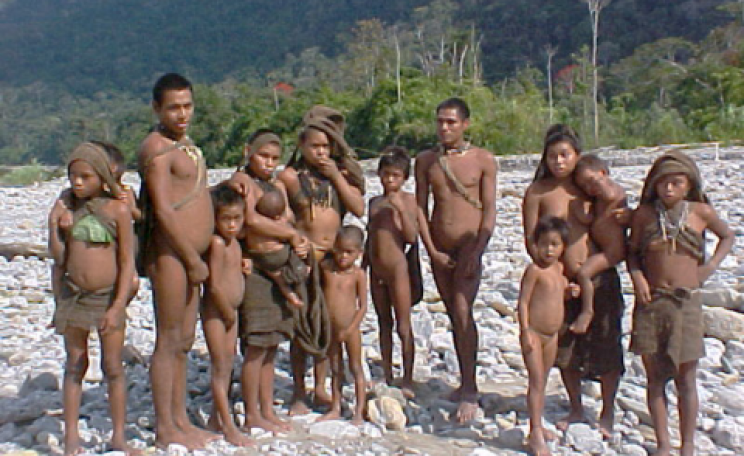*
With COP24 brimming with big talk, glossy posters and greenwashing, a group of indigenous activists and leaders have travelled the distance from the Peruvian Amazon to deliver passionate speeches.
These activists are revealing contradictions at the heart of current climate funds that coexist with destructive industries and governmental corruption.
Richard Rubio Condo, Vice-president of AIDESEP, said: “We come with the voices of the people from our communities, and we are very worried. Previously they said nothing could be done because there was no money. Now there is money. What is being done?”
“Incoherent and corrupt”
Condo took aim at the Forest Investment Program (FIP), financed by the World Bank. Fifty million dollars allocated to Peru in 2013 has not trickled down to people living on the ground, but has instead become locked into slow bureaucratic handling and lost into spaces of corruption.
Roberto Espinoza of APRI-SC said: “There are new computers, offices and buildings, but we are still suffering.”
Investment projects from banks, the UN Redd+, and the Joint Declaration of Intent (JDC) on forest emissions have so far secured 100 million dollars, but that money flies into the hands of a government that either endorses or is complicit in plantation projects, illegal gold mining and road construction. There's no mechanism for allowing indigenous people to channel or manage the funds.
Climate funds tend to bend towards huge industrial projects such as hydroelectric dams that force displace indigenous communities, clear forests and flood biodiverse ecosystems in the name of climate change mitigation, such was the case in Honduras.
“This is a problem,” weighed in Ms. Victoria Tauli-Corpuz the UN Special Rapporteur on the rights of indigenous peoples in a side event. “Climate funds need to help the efforts of the indigenous people on the ground. They play a crucial role and their policies need to be included in the climate funds.”
Indigenous knowledge
Proposals from indigenous people are ignored despite reports about the valuable knowledge that these groups have accumulated throughout centuries about the surrounding environment, as highlighted in the recent IPCC report and even in a Green Climate Fund evaluation. This knowledge is fundamental to halting climate change.
Zoila Merino, representing Eastern Peruvian indigenous peoples through ORPIO exclaimed: “They do not listen to us because they do not see us as fully intelligent humans. We know how to think! They are putting measures in, but we are the ones protecting the forests.”
Newly quantified scientific evidence has been released showing the net carbon density change in the Amazon basin over the years in different South American nations, comparing what is happening with deforestation within titled indigenous territories and outside them.
This initiative began after a plea from Juan Carlos Jintach of COICA to the scientific community in COP15 to track just how much carbon is stored in the forests as proof that indigenous peoples are key actors in conservation.
Dr. Wayne Walker of WHRC displayed the new graphs and said: “Evidence shows that in all areas inside indigenous territories, the net average effect of carbon storage is basically in balance, while on the outside of them there is much loss.
"Where there is loss within indigenous territories and protected areas, this is due to illegal mining and natural disasters. Indigenous territories are responsible for avoiding forest loss compared to outside them.”
Discrimination and racism
Esteban Morales Cama of AIDESEP explained that climate funds don’t always abide by the UN Declaration of Indigenous Rights: “As we are asking for financing for strategies to reduce mining, mining companies go ahead with their projects despite our ‘no’ during the consultation process.”
Proposals brought by indigenous people are based on the ‘Plan de vida’, a concept of a sovereign community living in harmony with Mother Earth on secured land, a kind of social planning against the extractivist economy their government and the investors are part of.
This highlights the deep contradiction that COP24symbolises. It is a conference financed by coal industries and gas companies greenwashing their way into pavilions while glossy posters of ‘change’ are hung onto walls.
Much of the speech, however focussed on what needed to be done to change the structure of climate finance in order for it to be relevant and useful.
Mr. Lifeng Li, support programme’s coordinator for GCF, said: “We fully agree that we need to build our capacity and hype the national entity’s focal points that manage the funds, to speak and negotiate with indigenous people about their allocation. GCF is not our fund, it is your fund that will help us work together to halt climate change”.
Innovative alternatives
The FIP-Peru was also discussed. It should to become a public investment fund, ratified into law, with its emphasis on land titling, management and territorial governance.
The UN-Redd+ needs to strengthen indigenous monitoring and patrolling strategies such as drone surveillance, with preferably a switch to Amazon Indigenous Redd+ (RIA) as an innovative alternative to the current Redd+ dependent on the carbon market.
The JDC needs to be corrected in order to include indigenous strategies, and all climate initiatives related to Amazonian land should have a direct channel to indigenous communities. Many COP participants are making this point in order to bring better accountability and monitoring.
Morales said: “With the way things are going with the corruption around climate finance, it’s essentially land trafficking with climate funds.”
As overbearing corporpations use COP to greenwash their practices, alarm bells rung by the delegates from the Peruvian Amazon show time again the valuable leadership, courage and concrete solutions that indigenous groups offer.
This Author
Temo Dias is a journalist and researcher in East Asian political affairs, environmental issues and governmental corruption.






